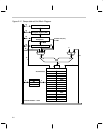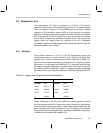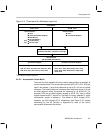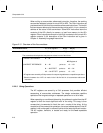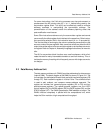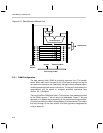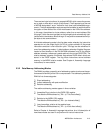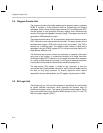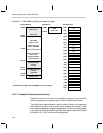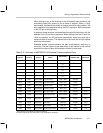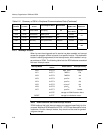
Data Memory Address Unit
2-11MSP50C6xx Architecture
For some instructions, the 5-bit string processor can also preincrement or
predecrement the AP pointer-value by +1 or –1, before being used by the
accumulator register block. This utility can be effectively used to minimize
software overhead in manipulating the accumulator address. The
premodification of the address avoids the software pipelining effect that
post-modification would cause.
Some C6xx instructions reference only the accumulator register and cannot
use or modify the offset register that is fetched at the same time. Other instruc-
tions provide a selection field in the instruction word (A~ or ~A op-code bit).
This has the effect of exchanging the column addressing sense and thus the
source or order of the two registers. Also, some instructions can direct the ALU
output to be written either to the accumulator register or to the offset accumula-
tor register. Refer to Chapter 4, Assembly Language Instructions, for more de-
tails.
The ALU’s accumulator block functions as a small workspace, which elimi-
nates the need for many intermediate transfers to and from memory. This al-
leviates the memory thrashing which frequently occurs with single accumula-
tor designs.
2.3 Data Memory Address Unit
The data memory address unit (DMAU) provides addressing for data memory
(internal RAM). The block diagram of the DMAU is shown in Figure 2–6. The
unit consists of a dedicated arithmetic block and eight read/write registers (R0
through R7). Each read/write register is 16-bits in size. The arithmetic block
is used to add, subtract, and compare memory-address operands. The
register set includes four general-purpose registers (R0 to R3) and four
special-purpose registers. The special-purpose registers are: the LOOP
control register (R4), the INDEX register (R5), the PAGE register (R6), and the
STACK register (R7). The DMAU generates a RAM address as output. The
DMAU functions completely in parallel with the computational unit, which
helps the C6xx maintain a high computational throughput.




